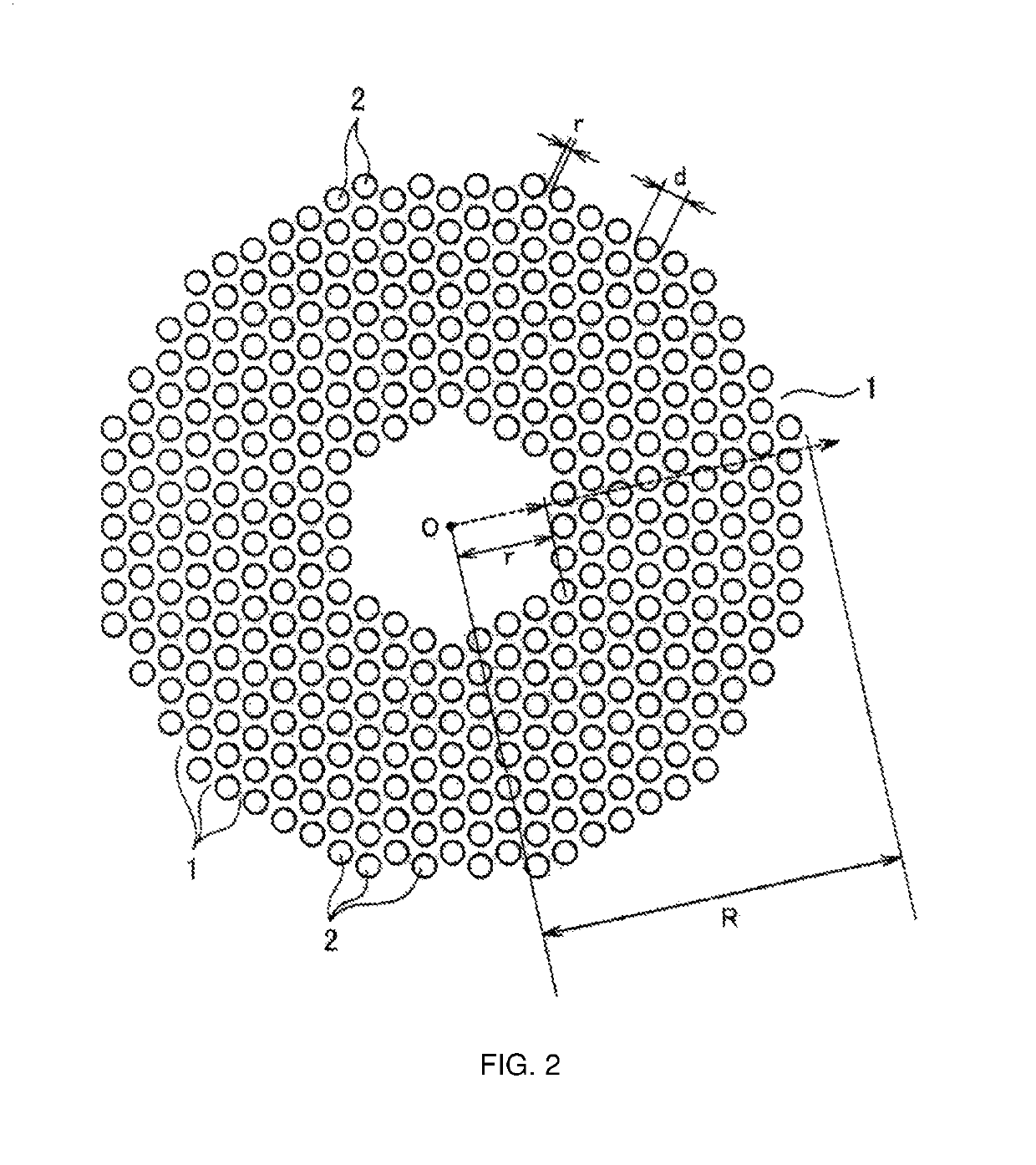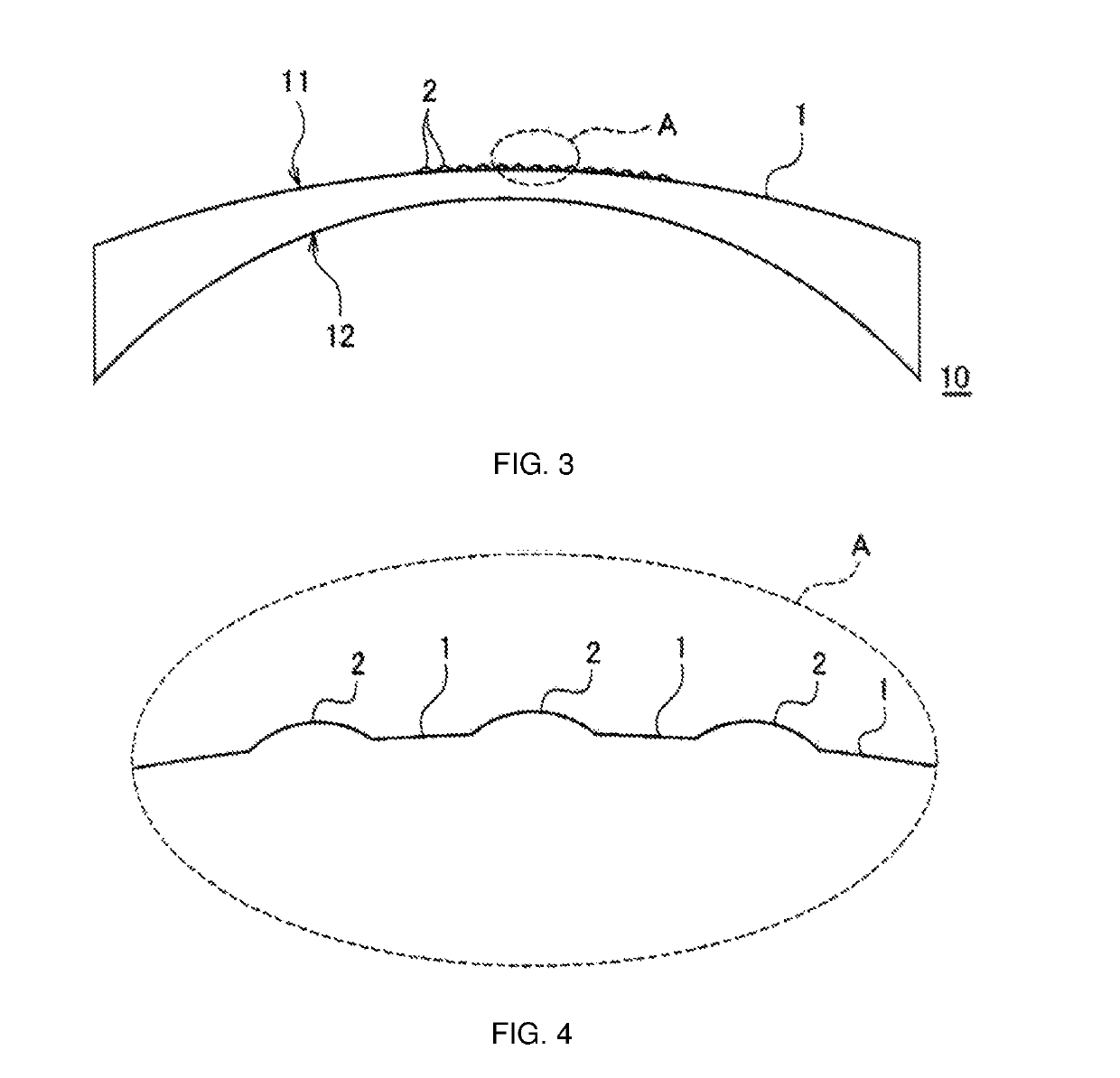Spectacle lens
a spectral lens and lens body technology, applied in the field of spectral lenses, can solve the problems of blurred image, sufferer's inability to focus on objects at any distance, and difficulty in focusing on near objects
- Summary
- Abstract
- Description
- Claims
- Application Information
AI Technical Summary
Benefits of technology
Problems solved by technology
Method used
Image
Examples
Embodiment Construction
[0034]A lens described in Japanese Patent Publication No. 4891249 is known as the lens having the function of suppressing the progress of the abnormal refractions (e.g., ametropia) of myopia and hyperopia in human eyes.
[0035]The lens described is a concentric Fresnel multifocus lens. Namely, this lens is the lens in which a plurality of refraction areas are concentrically arranged, wherein at least one of these refraction areas as a first refraction area has a first refractive power based on a prescription for correcting the abnormal refraction (e.g., ametropia) of eyes. Then, the refraction areas other than the first refraction area respectively have at least one refractive power different from the first refractive power.
[0036]The refraction areas other than the first refraction area may be second refraction areas only having a second refractive power different from the first refractive power, or may be a plurality of refraction areas having a plurality of refractive powers differe...
PUM
 Login to View More
Login to View More Abstract
Description
Claims
Application Information
 Login to View More
Login to View More - R&D
- Intellectual Property
- Life Sciences
- Materials
- Tech Scout
- Unparalleled Data Quality
- Higher Quality Content
- 60% Fewer Hallucinations
Browse by: Latest US Patents, China's latest patents, Technical Efficacy Thesaurus, Application Domain, Technology Topic, Popular Technical Reports.
© 2025 PatSnap. All rights reserved.Legal|Privacy policy|Modern Slavery Act Transparency Statement|Sitemap|About US| Contact US: help@patsnap.com



